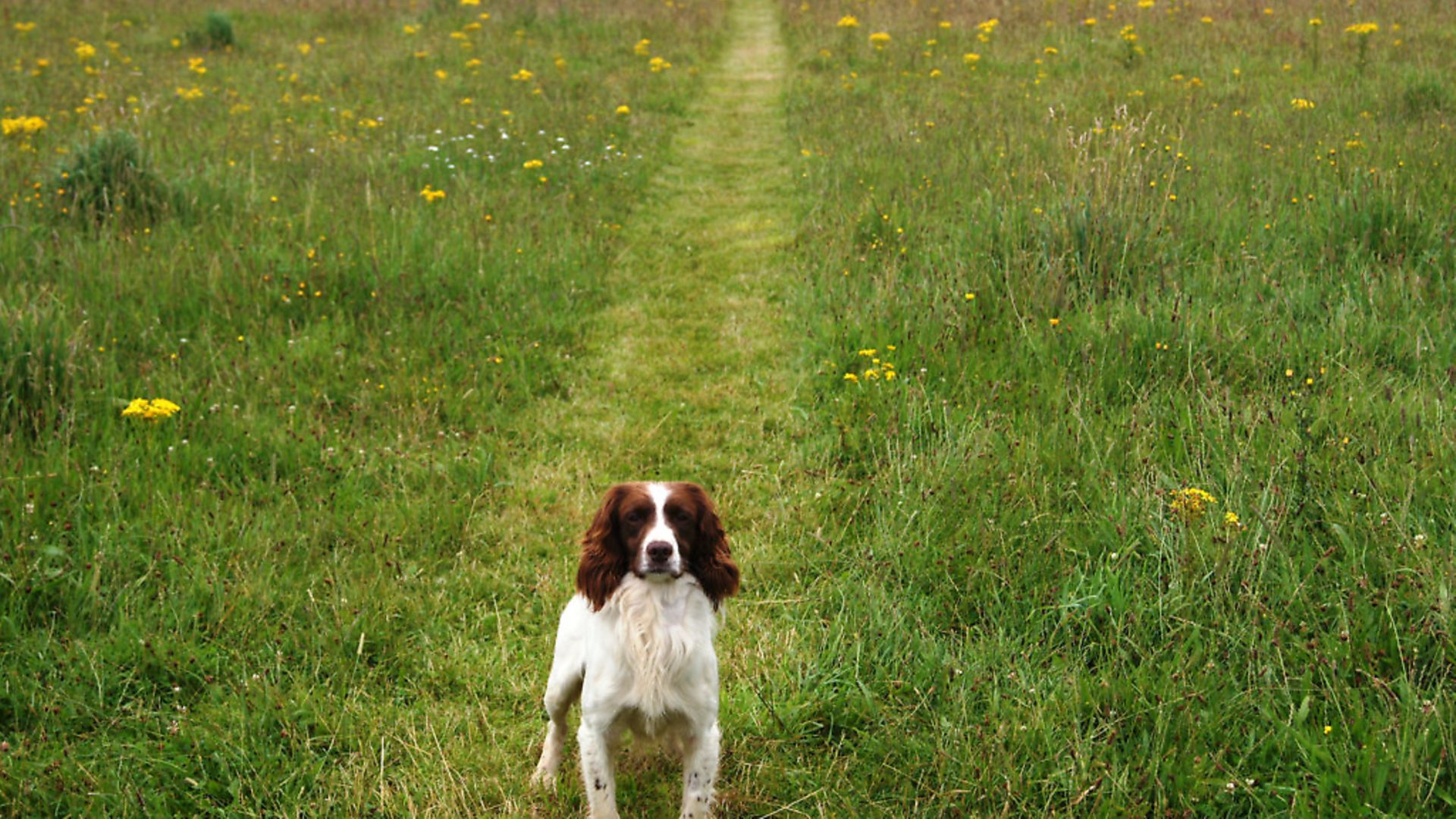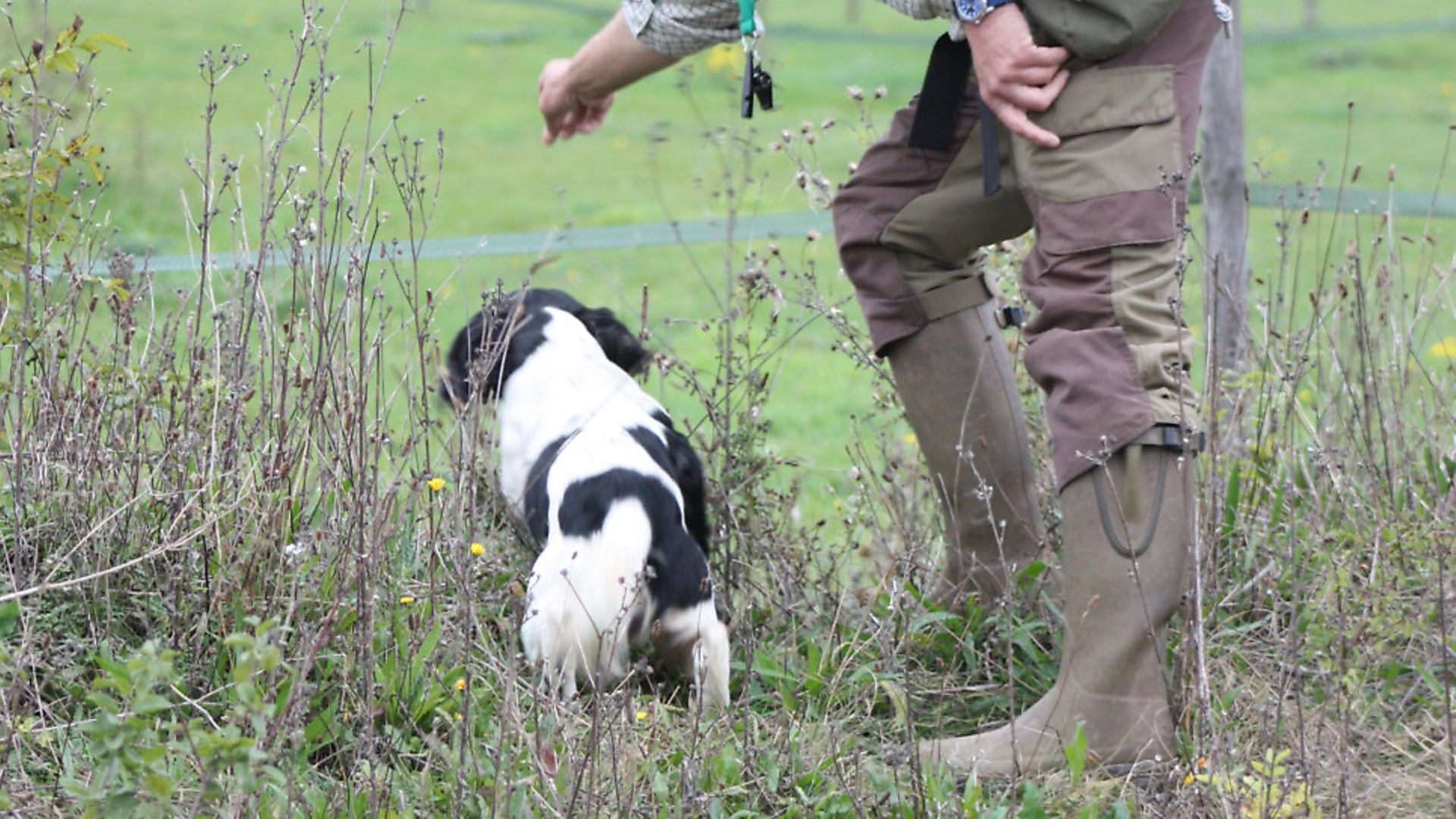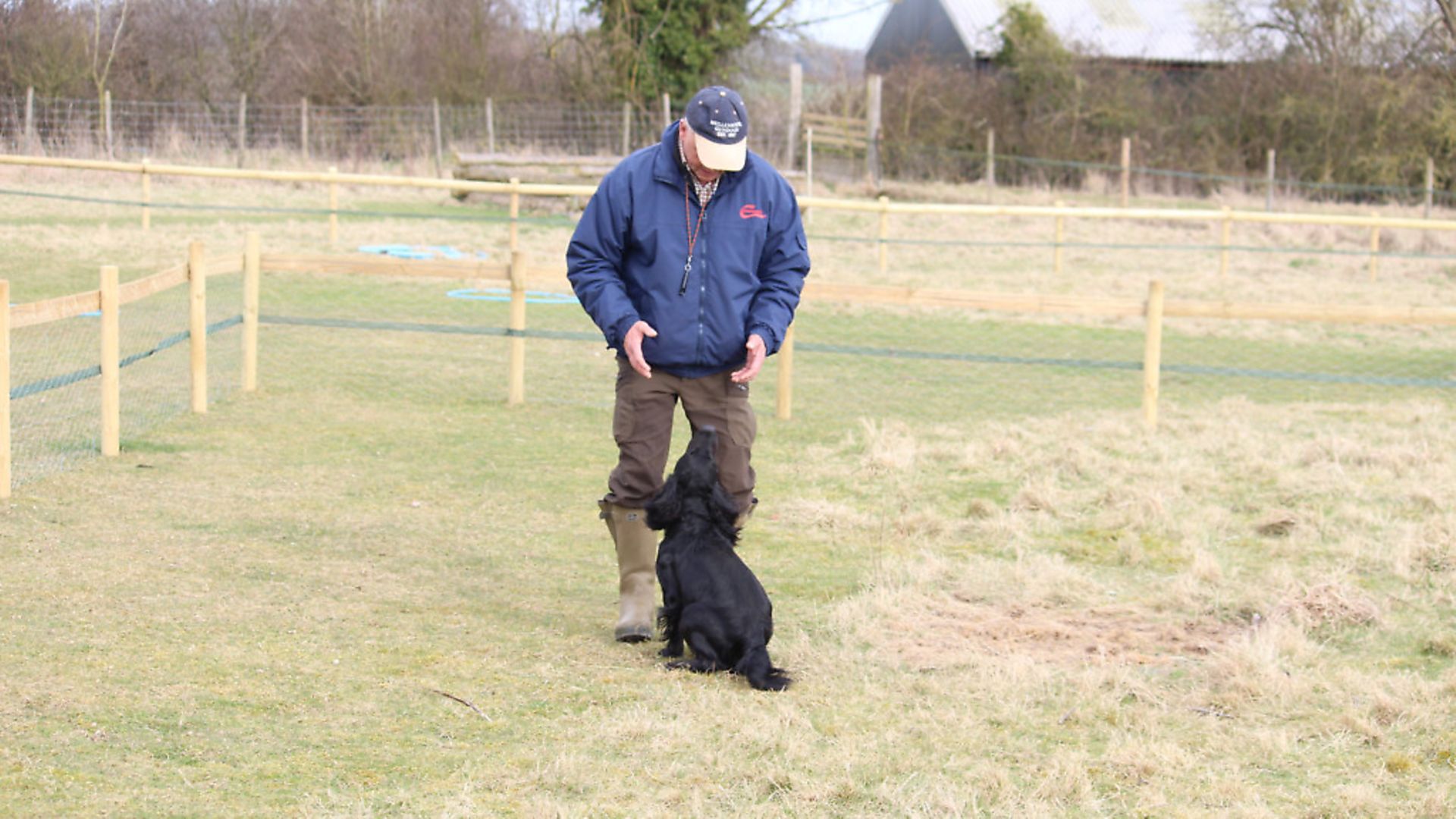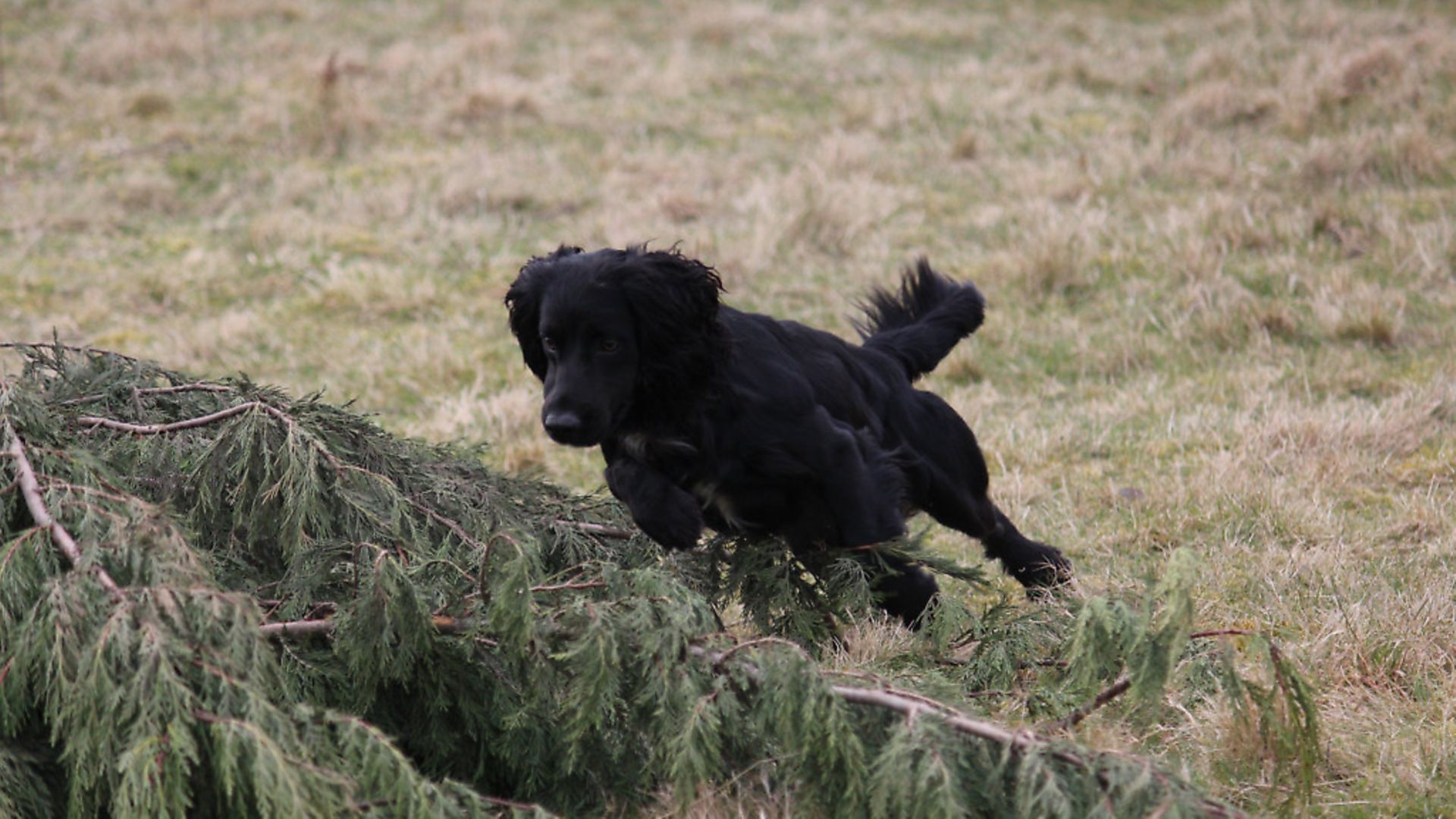You and your gundog have mastered the basics of retrieving, now it’s time to move onto multiple retrieves, blind retrieves and more! Gundog trainer Howard Kirby tells us how
 credit: Archant
credit: Archant
Retrieving dogs play several roles in both the shooting and competition field. For the most part, picking-up dogs find their game by being taken to an area where shot game is believed to be located. Once the dog and handler are in the area, the dog is instructed to hunt, whereupon it systematically works the ground in search of game. Once said game is located, the dog should gently deliver the game to its handler. Competition gundogs are required to be schooled so that they can be sent from some distance to the area where shot game is believed to be. Then, as would a picking-up dog, it hunts and retrieves that game.
Of course, different shooting scenarios require different approaches and a retrieving dog that can be quickly, quietly and efficiently sent to the area will always be an asset on shoot days. An awful lot of the work goes in to training dogs to be accurately guided into an area from distance – especially if you want the dog to take a straight line. Teaching the dog to take a line – and hold it – requires hours of patient and accurate training. The further and longer that the dog will hold this line without faltering, the more useful the dog will be.
So as we get stuck into spring and summer training regimes, it seems like the ideal moment to take a look at how we might improve our gundog’s ability to go out like an arrow from a bow, with power and accuracy.
 credit: Archant
credit: Archant
How to teach the basic retrieve
For the purpose of this article, we’re going to assume that the dog has nailed the basics of retrieving, it is fairly steady to a thrown dummy and, when asked, the dog goes straight out, picks up the dummy, returns straight to the handler and delivers to hand, confident in what it has to do to please you and maybe get another retrieve. As regular readers will know, here at Mullenscote we favour the use of target training to assist both the dog and ourselves in getting to this point. Of course, many trainers can achieve the same results perfectly well without hoops, boards or mats. Most of this early training is best established inside your house or garden. It’s important to remember that your objective is to school and condition the dog to a level where, irrespective of the ground you are on, he will run out like an arrow on a blind retrieve. This will require a well-considered and well-delivered training plan if you are to achieve this high standard.
As a youngster grows up, you will need more space and a slow but structured introduction of a greater level of distraction around the dog as it goes about its retrieving. We have created small clearly defined places at Mullenscote that become ‘birdy places’ in the minds of our keen little predatory dogs. These areas of brash, small pens or enclosed areas of white grass and cover all become places where the dog has been successful in finding dummies. As an aside, these areas help to encourage hard-hunting dogs to ‘hold an area’.
When we are working with first-time owners or novice handlers we often use purpose-built ‘retrieving corridors’ to encourage a straight out and straight back retrieve. Hallways, alleyways and fences can also work.
A technique that I favour is to give the dog two back-to-back marks, releasing the dog on his name or a ‘Fetch’ command after a short period of steadiness. In a perfect world, a training assistant now slips a third dummy down, this is known as a memory blind. Carefully realign the dog with the dummy; think of yourself as the bow and the dog as the arrow. Ensure his head and body are lined up with the dummy; use your body and arm to aim him.
Look for the moment that the dog locks onto the area you want him to go to and quietly send him ‘Back’.
With this exercise, you are looking to see the dog race out to the ‘birdy place’ with the same power and confidence that he shows on a good mark.
Just to recap on that exercise, ensure you are working at distances that the youngster is comfortable with, then two marks and a memory blind. Slowly but surely, you can build the distance; this exercise is all about building confidence, so avoid doing the opposite.
 credit: Archant
credit: Archant
Using tramlines in gunodg training
Use tramlines (or wheelings, depending on which part of the country you come from) to guide the dog. Well-marked paths, alleyways and tracks will help to ensure he stays on line. A good exercise is to walk the dog around the outside of a straight-edged field. Drop a dummy as a memory in one corner then heel him all the way to the next.
This is an efficient use of training time – if you walk all the way around the field you will end up back where you started, having given the dog four long memory retrieves, that he should be doing at full gallop. Training and exercise all in one.
 credit: Archant
credit: Archant
How to teach multiple dummy retrieves
If you are short on training partners, you can set three dummies out in a straight line, about 20m apart. You might try standing them up on their ends and maybe wrap them inside a white sock. This will help the dog to see them.
Walk away and send the dog back to retrieve them one at a time. Take your time between send aways, and ensure you take the time to set the dog up. Once the dog gets to the first dummy, ensure he comes straight back to you. Done incorrectly, this exercise can lead to dummy swapping or other nasty habits.
How to build confidence when training gundogs
So there’s just a few tips and ideas to get our dogs running straight. A common mistake is to make things too difficult for an inexperienced dog. This will lead to the dog losing confidence in your instructions. A sensitive dog will simply shut down, whereas its opposite will take the view that you’re an idiot and take matters into their own hands. Before you know it, the handler is accusing the dog of being thick or stubborn. Try not to be that person. The dog usually turns out to be as good as your ability to train it. Have a think about that last sentence, try to understand your own strengths and weaknesses.
If you are able to really study what your dog needs, and how you personally are equipped to help them, you will discover that the little dog that you have labelled as being ‘difficult’ will help to make you a better person!
Blimey, that’s heavy man!